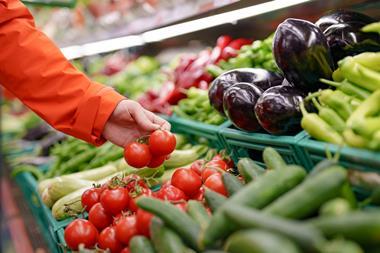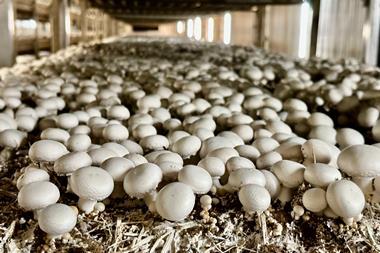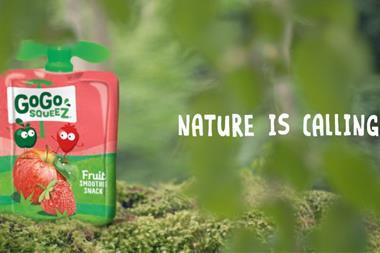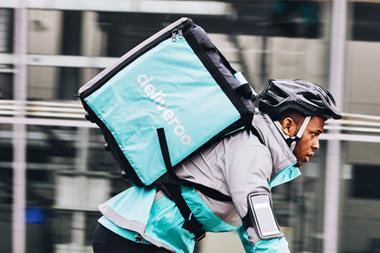Think glamour, branding and Hollywood endorsement - potatoes probably won't be the first product that springs to mind. But that may not be the case for much longer. Richard Ford reports on the growing trend towards branded produce
"You want me to be the face of potatoes?" an incredulous Marcia Cross asks her agent in the new TV ad for Albert Bartlett's Rooster potato brand. And who can blame her?
Potatoes might be one of the most lucrative categories for retailers (the Rooster brand alone is worth £24m) but, like fresh produce in general, they would never have been described as glamorous. Until now. While her Desperate Housewives co-star Eva Longoria Parker has the sexy Magnum ice cream gig, Cross aka Bree Van de Kamp in the American TV show is twinned with Red Rooster, according to her agent's pitch, on the basis that it is versatile and matches her red hair.
The association of a British potato with a Hollywood actress is even more unlikely than Sex Pistol Johnny Rotten's endorsement of butter brand Country Life. But comparisons with the dairy category are instructive. While dairy once equally commoditised now boasts strong brands in milk, butter and cheese, the market for fresh produce brands was limited to stalwarts Del Monte and Fyffes.
However, a new generation of fresh produce brands, including Wok or Not, Good Natured Fruit, The Very Very Veg Co and The National Trust are transforming the traditionally lacklustre image of the highly commoditised fresh produce category.
The newest entry is Found!, a 'brand' of mushroom. "We've just completed our second week in Tesco, and it's gone well beyond our expectations double what we had planned," reports managing director Mark Haynes. "We've also had lots of interest from Booths and other independents and hope to launch in Harvey Nichols around Christmas."
Haynes aims to grow the £300m mushroom category with products that haven't previously been available in mainstream retail, but he believes the brand can also develop into other fruit and veg.
Relative newcomers such as Florette and Angus Soft Fruits have also aggressively expanded their ranges on the back of recent success. Sales of Angus Soft Fruits' pesticide-free Good Natured brand doubled from £3m to £6m this year, as it diversified into tomatoes, peppers and cucumbers. A further addition to the range is expected next week.
Supermarkets have evidently welcomed moves to cheer up the fresh produce category. If it's done properly, the high-volume throughput and decent margins make fresh produce one of the most important areas of the store. But its role for a retailer goes beyond that. "Produce helps fashion the image of the entire store," says Sandy Sewell, commercial director of salad brand Florette.
With brands, it's possible to add value and aid differentiation, which is especially important as own-label ranges become homogenized. "Brands allow retailers to inform consumers in a way that is complementary to own-label," says Haynes. "The style of packaging and information is different and stands out in the own-label dominated produce aisle."
Add the glamour of a Hollywood actress, and you can also attract new customers, says Albert Bartlett marketing manager John Hicks. "Marcia brings a touch of glamour and appeals to our core audience, but also the 18 to 25-year-olds that we possibly missed in the past."
Warwick Cairns, head of strategy at brand consultants Brandhouse, believes the opportunity for fresh produce brands is compelling. Consumers are increasingly concerned about the source of their foods, as retail becomes more impersonal, he says. "Good brands add value: they can provide a standard of quality and a promise of emotional and physical benefits that consumers respond to, pay more for and choose over inferior alternatives. They also provide the retailer with ready-made marketing support, with brand owners arranging and funding activities such as competitions and in-store tastings."
So, why has the industry been so slow to take the branded route? Challenges specific to the fruit and veg category are to blame, say experts. For example, ensuring consistency of quality is difficult. Whereas products such as cheese can be manufactured in a tightly controlled environment, fruit and veg present a different story.
Although growers have made huge strides in improving and maintaining consistency over the past 20 years, they are still subject to the vagaries of growing conditions and seasons.
New varieties have created some traction. The world's first apple brand, Pink Lady, is a rebadged varietal called Cripps Pink. But further innovation to develop brand extensions is often impossible. "With many other products, you can add something to it that changes it into a different product, like cheese with chunks of ginger in it, for example. You can't really do that with fruit and veg," says Andy Macdonald, MD of Coregeo, UK licensor of the Pink Lady apple brand.
Prepared produce is another story, Sewell believes, as suppliers can add value through convenience. A Christmas 2009 range of prepared bowls is the latest addition to Florette's branded offering, with additions such as raspberry coulis for the fruit bowls, and a sour cream and chive dip for the vegetable crudités.
Nutrition may also be a key point of difference in future branding efforts, believes NFU chief horticultural adviser Philip Hudson, citing Yakult as an example of a brand that has successfully built a clear message around its functional benefit. "There's no reason why that can't be done with fruit and veg," he says. Currently, the ability for brand owners to make such nutritional claims is restricted and, as the organic movement has discovered, the Food Standards Agency is not averse to dismissing, as insignificant, additional nutritional credentials; but as science moves on, it may one day be the case that one broccoli brand can claim to be more effective at beating cancer than its on-shelf rival.
Some fresh producers remain unconvinced retailers even want fresh brands, with the reduction in the number of organic lines coinciding with a 'less is more' policy. "It is still difficult," says Angus Soft Fruits commercial director John Gray, "for new lines branded or own label to get shelf space."
"Unless there's a point of difference based on taste or provenance, it is impossible to justify the higher price point of a brand," adds Greenvale's Tesco business unit manager Darren Huxtable.
But Steven Esom, the former Waitrose managing director, disagrees. "Don't see it as brands versus own label, see it as offering customers variety and choice."
Esom's point is illustrated by Tesco's recent introduction of the American Carolina Sun sweet potato brand. It was brought in by Jonathan Corbett, Tesco buying manager for potatoes, roots and onions, to reinvigorate the sweet potato category, which was flagging.
Since Carolina Sun was introduced, sales are back up and Tesco has increased its market share, Corbett claims, and he welcomes the role brands can play. "There is definitely a place for fresh produce brands, though I don't think they will ever take over from Tesco own label."
On one thing, however, fresh produce brands are in agreement, and that's the effort required to build a brand. "It takes time, energy and commitment," says Albert Bartlett's Hicks. "The blue packaging gives us standout on shelf, but it's taken six years of constant investment and we also put recipes on pack."
Of course, not every fresh produce supplier has £3m to spend on an ad, but several suppliers credit the retailers for helping. "When Good Natured launched into Tesco, in 2007, it wasn't hugely successful," admits marketing manager Jill Orr. "We didn't know how to manage a brand. We were a group of growers, and it was difficult for Tesco as well."
The turning point came in 2008, says Orr, when Good Natured launched into Asda. "We knew we had to raise consumer awareness and with our learnings, we now work tirelessly through PR, advertising and other marketing activity."
And marketing doesn't have to be expensive, adds Found! boss Mark Haynes. "We've had good support from Tesco on shelf positioning and shelf allocation, but we've also helped ourselves by organising a foraging day for press. If you are clever you can still get your products out there relatively cheaply. You must have something of interest to the customer, and a bit of upfront research can help too."
Sign in to comment on this article
Not logged in before? Register for FREE guest access today.
You will be able to:
- Read more stories
- Receive daily newsletters
- Comment on stories
Advert

















No comments yet